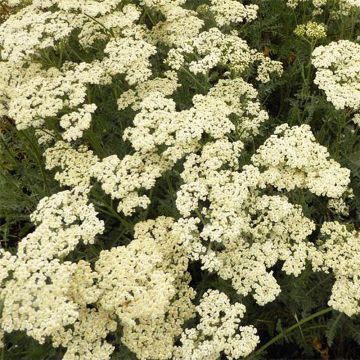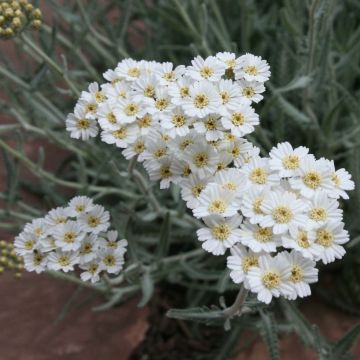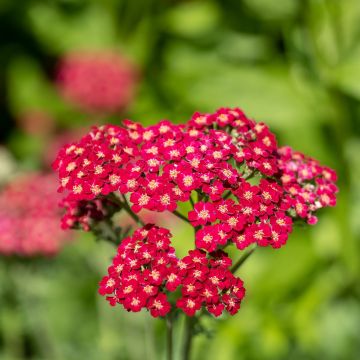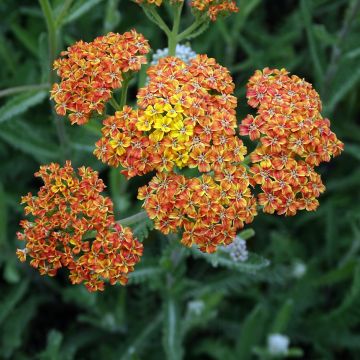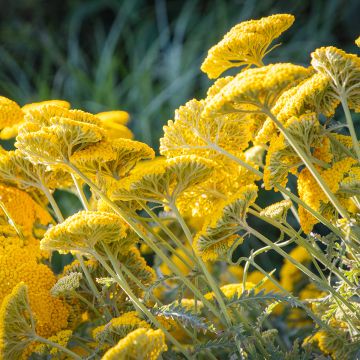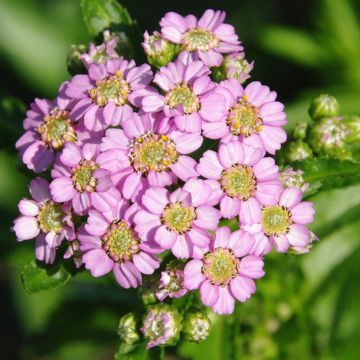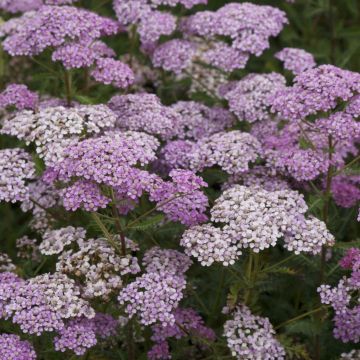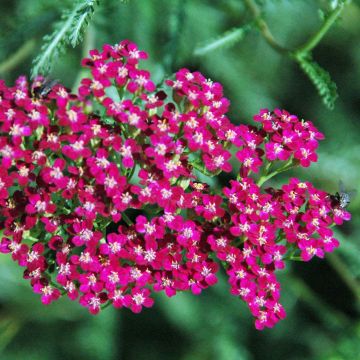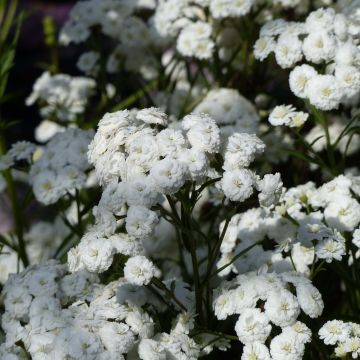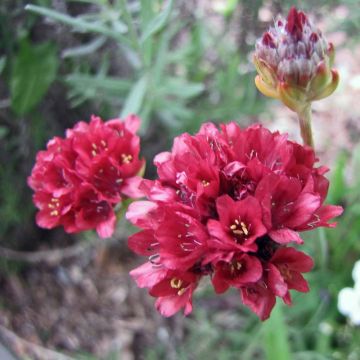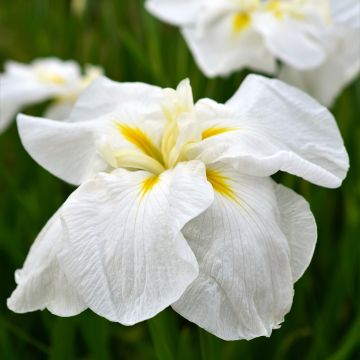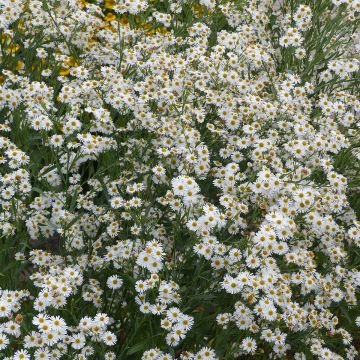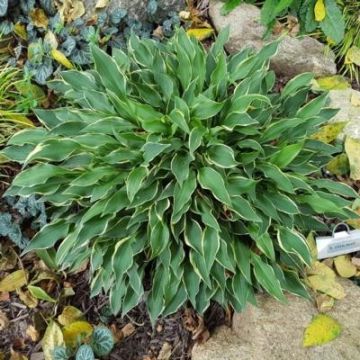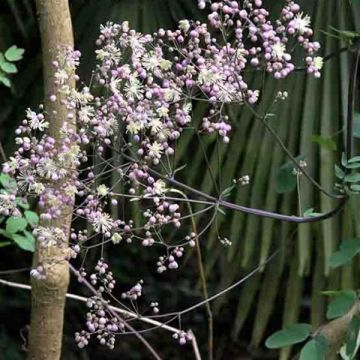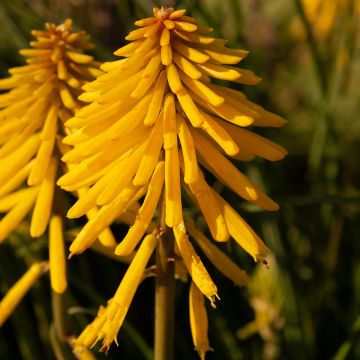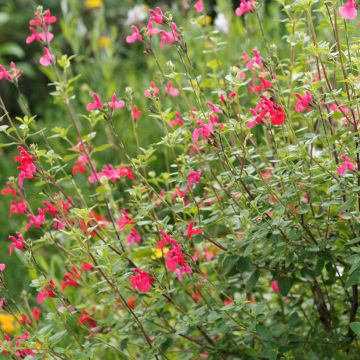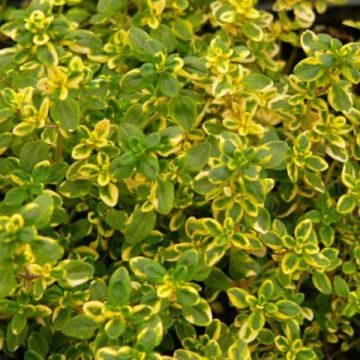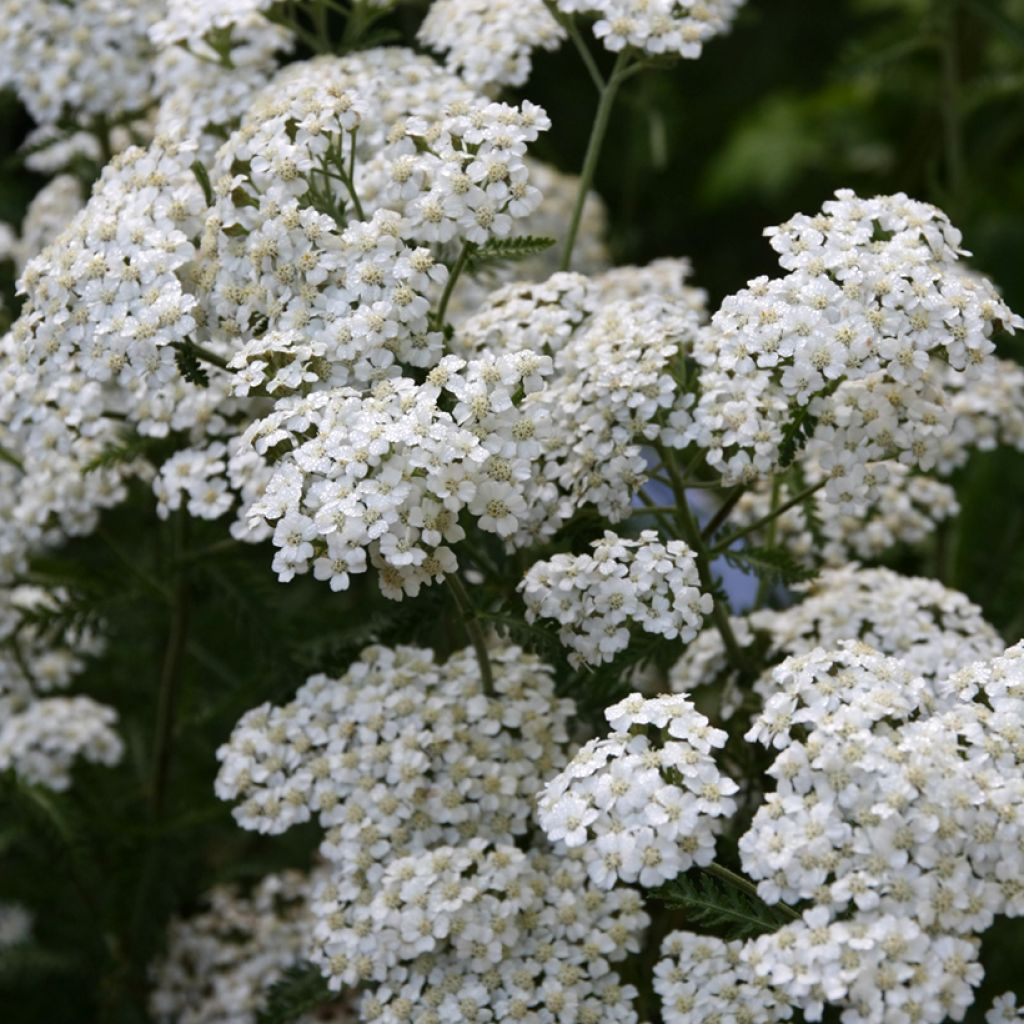

Achillea millefolium Schneetaler
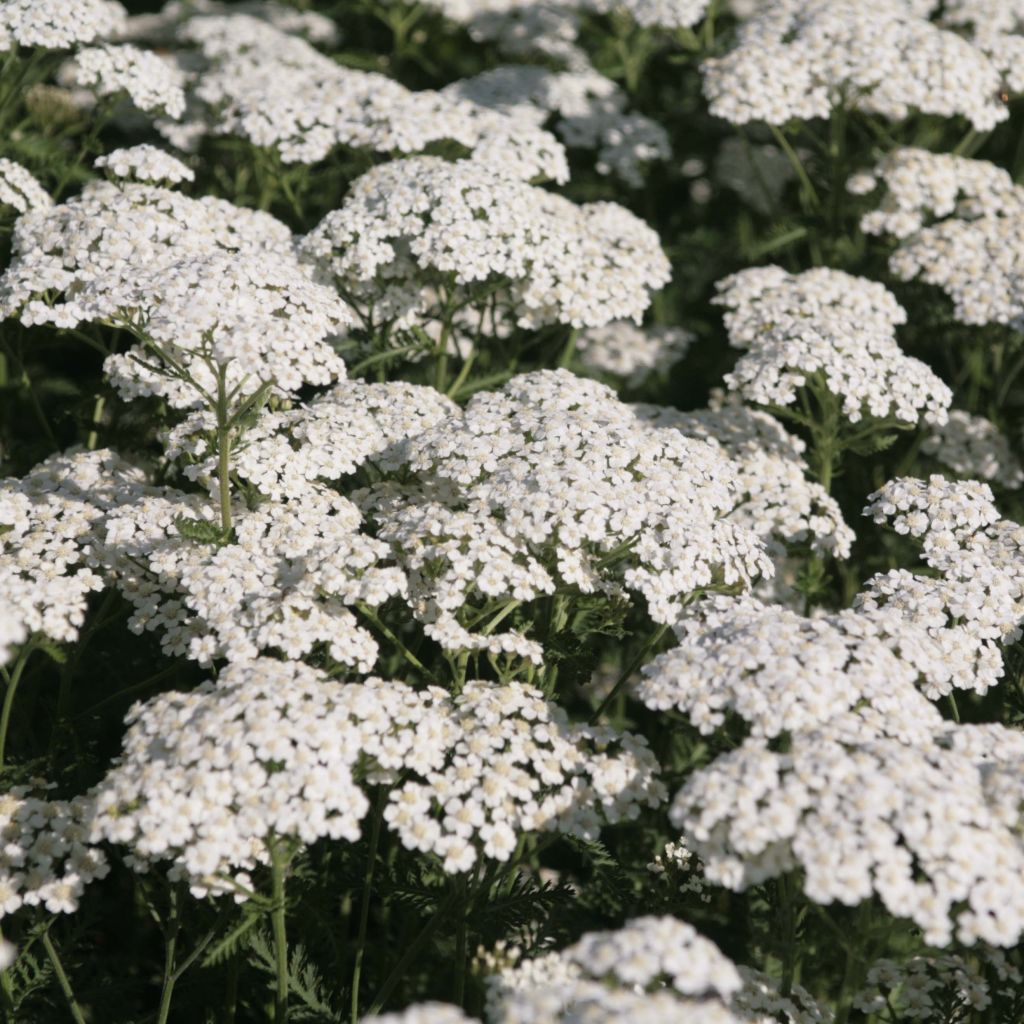

Achillea millefolium Schneetaler
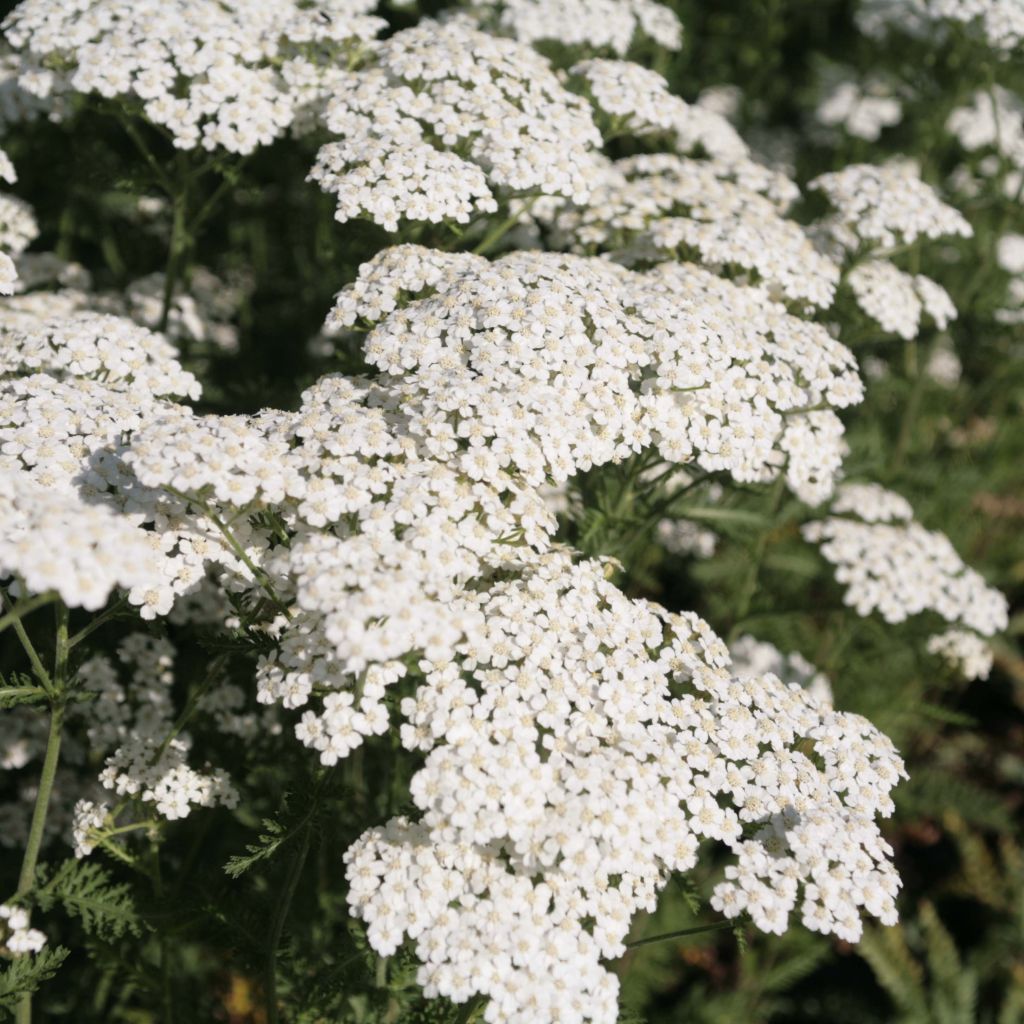

Achillea millefolium Schneetaler
Achillea millefolium Schneetaler
Achillea millefolium Schneetaler
Common Yarrow, Milfoil, Thousand-leaf, Nosebleed plant
Disappointed with the plant I received, 3 small stems lying down, hoping they will grow.
Sylvie, 10/03/2024
This item cannot be shipped to the selected country
Delivery charge from €5.90
More information
Schedule delivery date,
and select date in basket
This plant carries a 12 months recovery warranty
More information
We guarantee the quality of our plants for a full growing cycle, and will replace at our expense any plant that fails to recover under normal climatic and planting conditions.
From €5.90 for pickup delivery and €6.90 for home delivery
Express home delivery from €8.90.
Does this plant fit my garden?
Set up your Plantfit profile →
Description
The 'Schneetaler' Yarrow is a vigorous semi-evergreen perennial with upright habit and pure white umbel flowers that appear from July to September. Its aromatic foliage, of dark green colour, forms a tuft with a light and feathery silhouette that complements both more rural scenes and larger, fleshy perennials in sunny borders. Yarrow can be planted in all regions, in sunny and well-drained soil. It is an excellent perennial for flower beds. Heat and drought resistant in summer, it is also suitable for dry gardens. With its spreading habit, it is also ideal as a ground cover, gradually forming beautiful flowering carpets as it spreads through its rhizomes.
Yarrow is a stoloniferous perennial plant native to Europe and Asia Minor and belongs to the asteraceae family. It attracts pollinators, especially beetles, thanks to its nectar. It forms a tuft of characteristic leaves that resemble those of some ferns. The 'Schneetaler' Yarrow reaches 60 cm (24in) in height at full bloom. The stem is channelled and villous, and the foliage is finely divided into strips. The inflorescence is a slightly convex flat corymb, held well above the foliage. It is composed of numerous small flower heads. When dried, the flowers remain decorative long after summer and can be dried outdoors and in the shade for creating dry bouquets. By regularly removing faded inflorescences, the flowering is very perpetual. It prefers fresh, light and not too rich soils, but it also tolerates calcareous soils, dry soils in summer and less sunny exposures. Heavy, waterlogged soils should be avoided.
As a hardy and undemanding perennial, 'Schneetaler' Yarrow fits well in a dry meadow with golden grasses, the airy blooms of gauras, and blue catmints. Easy to grow and drought-tolerant, consider using it to dress the base of shrubs or to border a sunny bed. In a sunny border, plant it with light orange flowers of geum, raspberry and white shrub salvias, wine-red monardas, and blue geraniums. Combine it with slender silhouettes to enhance the horizontal aspect of its umbels.
The plant has recognized medicinal properties: it is hemostatic, the leaves have healing properties, and the flowers have a stimulating, tonic, and febrifuge effect when used in high concentration. The bitter-tasting young shoots can be harvested in spring and consumed sparingly in salads, sauces, or as sandwich condiments. In some regions, it is used to flavour beers. Yarrow tea is effective against oily skin.
Yarrow owes its name to the Greek hero Achilles, who is said to have discovered its medicinal properties by using it to treat the wounds of soldiers during the Trojan War.
Report an error about the product description
Achillea millefolium Schneetaler in pictures
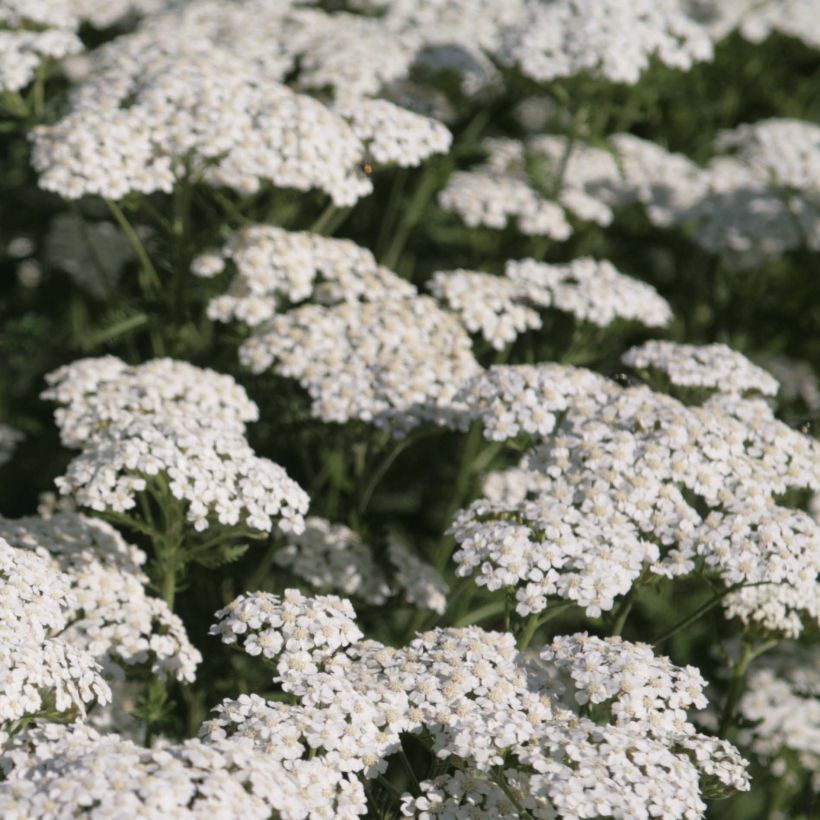

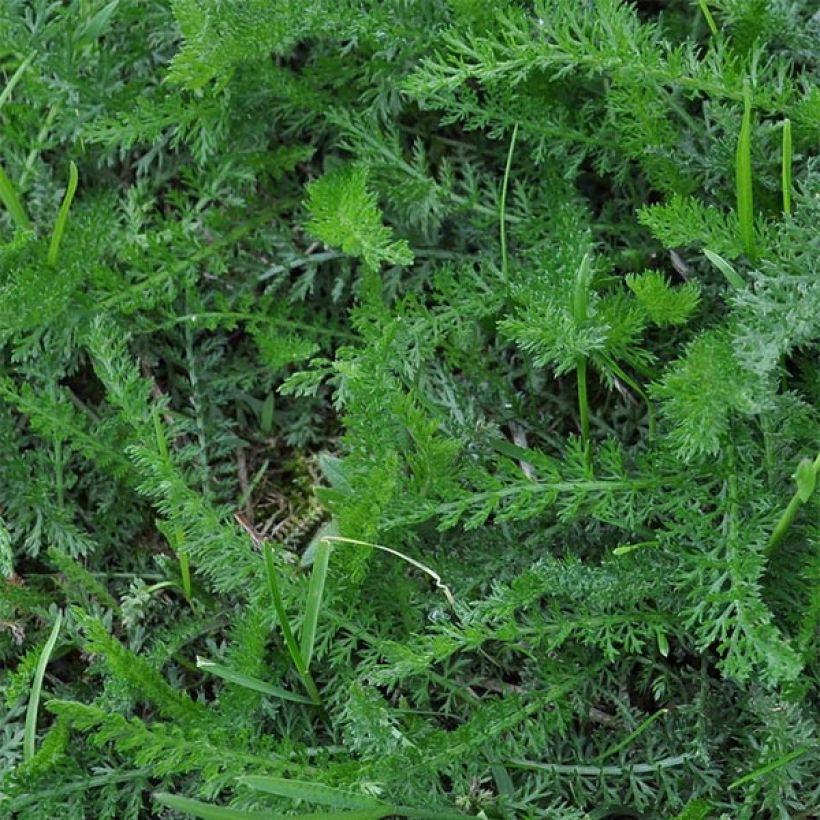

Flowering
Foliage
Plant habit
Botanical data
Achillea
millefolium
Schneetaler
Asteraceae
Common Yarrow, Milfoil, Thousand-leaf, Nosebleed plant
Cultivar or hybrid
Other Achillea
Planting and care
Plant the 'Schneetaler' yarrow in any soil type, even chalky, dry or moist, but well-drained. This plant adapts well even to clay soils, if they are healthy and well amended. It will grow in partial shade but prefers full sun. In a cool climate, planting can be done all year round. In regions with hot and dry summers, it is preferable to plant in September-October so that the plant can root well during autumn and winter to withstand the following summer. It is advisable to cut back all vegetation at the end of the season to promote the growth of young shoots in spring.
Planting period
Intended location
Care
-
, onOrder confirmed
Reply from on Promesse de fleurs
Summer flowering perennials
Haven't found what you were looking for?
Hardiness is the lowest winter temperature a plant can endure without suffering serious damage or even dying. However, hardiness is affected by location (a sheltered area, such as a patio), protection (winter cover) and soil type (hardiness is improved by well-drained soil).

Photo Sharing Terms & Conditions
In order to encourage gardeners to interact and share their experiences, Promesse de fleurs offers various media enabling content to be uploaded onto its Site - in particular via the ‘Photo sharing’ module.
The User agrees to refrain from:
- Posting any content that is illegal, prejudicial, insulting, racist, inciteful to hatred, revisionist, contrary to public decency, that infringes on privacy or on the privacy rights of third parties, in particular the publicity rights of persons and goods, intellectual property rights, or the right to privacy.
- Submitting content on behalf of a third party;
- Impersonate the identity of a third party and/or publish any personal information about a third party;
In general, the User undertakes to refrain from any unethical behaviour.
All Content (in particular text, comments, files, images, photos, videos, creative works, etc.), which may be subject to property or intellectual property rights, image or other private rights, shall remain the property of the User, subject to the limited rights granted by the terms of the licence granted by Promesse de fleurs as stated below. Users are at liberty to publish or not to publish such Content on the Site, notably via the ‘Photo Sharing’ facility, and accept that this Content shall be made public and freely accessible, notably on the Internet.
Users further acknowledge, undertake to have ,and guarantee that they hold all necessary rights and permissions to publish such material on the Site, in particular with regard to the legislation in force pertaining to any privacy, property, intellectual property, image, or contractual rights, or rights of any other nature. By publishing such Content on the Site, Users acknowledge accepting full liability as publishers of the Content within the meaning of the law, and grant Promesse de fleurs, free of charge, an inclusive, worldwide licence for the said Content for the entire duration of its publication, including all reproduction, representation, up/downloading, displaying, performing, transmission, and storage rights.
Users also grant permission for their name to be linked to the Content and accept that this link may not always be made available.
By engaging in posting material, Users consent to their Content becoming automatically accessible on the Internet, in particular on other sites and/or blogs and/or web pages of the Promesse de fleurs site, including in particular social pages and the Promesse de fleurs catalogue.
Users may secure the removal of entrusted content free of charge by issuing a simple request via our contact form.
The flowering period indicated on our website applies to countries and regions located in USDA zone 8 (France, the United Kingdom, Ireland, the Netherlands, etc.)
It will vary according to where you live:
- In zones 9 to 10 (Italy, Spain, Greece, etc.), flowering will occur about 2 to 4 weeks earlier.
- In zones 6 to 7 (Germany, Poland, Slovenia, and lower mountainous regions), flowering will be delayed by 2 to 3 weeks.
- In zone 5 (Central Europe, Scandinavia), blooming will be delayed by 3 to 5 weeks.
In temperate climates, pruning of spring-flowering shrubs (forsythia, spireas, etc.) should be done just after flowering.
Pruning of summer-flowering shrubs (Indian Lilac, Perovskia, etc.) can be done in winter or spring.
In cold regions as well as with frost-sensitive plants, avoid pruning too early when severe frosts may still occur.
The planting period indicated on our website applies to countries and regions located in USDA zone 8 (France, United Kingdom, Ireland, Netherlands).
It will vary according to where you live:
- In Mediterranean zones (Marseille, Madrid, Milan, etc.), autumn and winter are the best planting periods.
- In continental zones (Strasbourg, Munich, Vienna, etc.), delay planting by 2 to 3 weeks in spring and bring it forward by 2 to 4 weeks in autumn.
- In mountainous regions (the Alps, Pyrenees, Carpathians, etc.), it is best to plant in late spring (May-June) or late summer (August-September).
The harvesting period indicated on our website applies to countries and regions in USDA zone 8 (France, England, Ireland, the Netherlands).
In colder areas (Scandinavia, Poland, Austria...) fruit and vegetable harvests are likely to be delayed by 3-4 weeks.
In warmer areas (Italy, Spain, Greece, etc.), harvesting will probably take place earlier, depending on weather conditions.
The sowing periods indicated on our website apply to countries and regions within USDA Zone 8 (France, UK, Ireland, Netherlands).
In colder areas (Scandinavia, Poland, Austria...), delay any outdoor sowing by 3-4 weeks, or sow under glass.
In warmer climes (Italy, Spain, Greece, etc.), bring outdoor sowing forward by a few weeks.

































